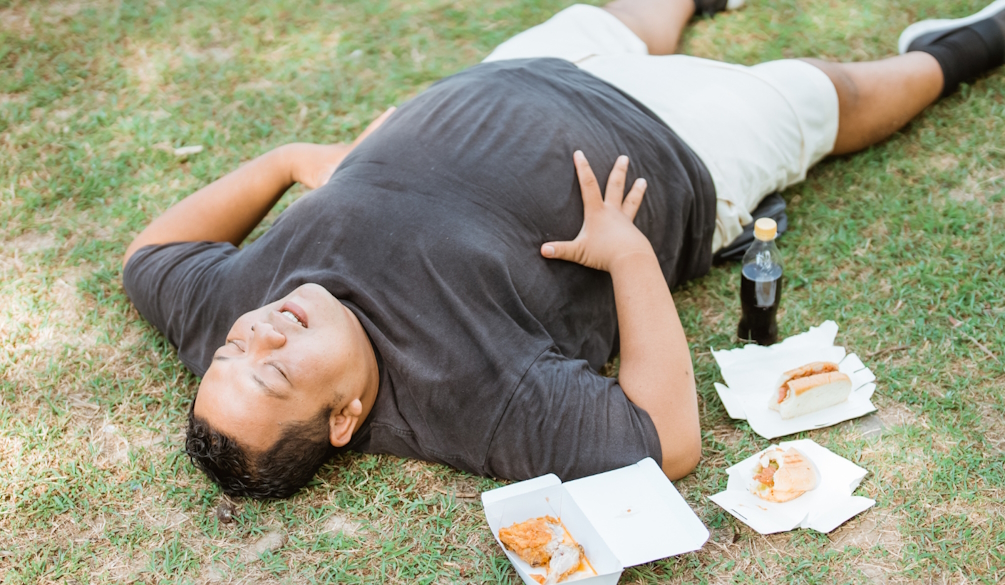Sarcopenic obesity can rob people of their strength – but even brief bursts of exercise help a lot
- Written by Justin Keogh, Associate Dean of Research, Faculty of Health Sciences and Medicine, Bond University

It’s no secret old age can rob us of our strength. This age-related muscle wastage – known as sarcopenia – can eventually lead to more falls, more hospital stays, difficulty with walking or toileting and less independence. Eventually, it can mean needing residential aged care.
Many people imagine a person with this condition is old, frail and very thin. But in fact, people who are not thin – and not particularly old – can also have sarcopenia.
Sarcopenic obesity is where a person with excess body weight – particularly fat – has also lost a lot of muscle mass and strength.
The condition, driven by lack of exercise and poor nutrition, can sneak up on people and set in well before they realise there’s a problem. It can affect otherwise healthy people, especially from middle age onwards.
A hidden condition
Sarcopenic obesity is a hidden condition. On the outside, the person may appear to have excess body weight – but on the inside, they have lost a lot of muscle mass and strength.
Or they may not appear overweight but, in truth, they have lost muscle and gained fat. That means a person in their 60s who still wears the same size clothes they wore in their 20s could still have sarcopenic obesity.
While many people are aware of the health issues often associated with obesity (such as a higher risk of diabetes, cardiovascular disease and early death), the combined impact of both obesity and low muscle mass is even more harmful.
This is because muscles are important for both movement and metabolism in our bodies. People with sarcopenic obesity are at a greater risk[1] of losing the ability to do everyday tasks such as walking or getting on and off the toilet. It can also mean increased illness, and early death.
Why does sarcopenic obesity often sneak up on people?
Sarcopenic obesity can creep up on us gradually over time. People may not appear frail or thin, but have in fact already lost quite a lot of muscle through lack of use.
Studies[3] have found people can lose up to 1% of muscle a year from age 40 on.
The muscle mass that is retained can also be less functional[4] and is often marbled with fat – a bit like a piece of wagyu beef.
Another a review suggested[5] visceral (abdominal) fat can increase by over 200% in men and 400% in women between your 30s and your 70s.
What can I do?
There’s lots you can do – but it can take time. If you want to reverse your sarcopenic obesity, or reduce your risk of getting it, you can try to:
-
do more exercise[6], including both resistance (strength) and aerobic training
-
aim to progress to 150-300 minutes of physical activity per week, including two or three resistance training sessions (lifting weights or doing bodyweight exercises)
-
do more walking or cycling
-
exercise in the pool.
You may also consider adjusting your diet, as nutrition[7] also plays an important role in reversing sarcopenic obesity.
However, very low-calorie diets typically used to reverse obesity may further reduce muscle mass. You might lose fat, but you risk also losing muscle and strength.
A recent research paper[8] coauthored by one of us (Carla Prado) suggests aiming instead for a modest reduction in energy intake of between 200 and 700 calories per day and boosting your physical activity.
The same paper[9] suggests considering incorporating more protein into your diet (between 1 and 1.5g of protein per kilogram of bodyweight per day). This can help minimise food cravings and maintain or increase muscle mass.
Sources of lean protein include:
-
low-fat dairy products
-
white fish
-
chicken breast
-
lean beef or pork
-
lentils
-
reduced-fat soy milk
-
tempeh or tofu.
Making such changes in physical activity and diet is not easy. But the more your sarcopenic obesity progresses, the harder it gets to do exercise, which further exacerbates the problem. It is a vicious circle.
What can doctors and governments do?
Doctors in Australia can talk to their patients about taking advantage of the Medicare-funded Chronic Disease Management[11] program, which covers the cost of five treatment sessions a year with an exercise physiologist and a dietitian.
If you have private health insurance, that may cover some of your additional consultations.
Yes, treatment and support can be expensive. But the health benefits and savings typically pay for themselves over time.
GPs and other allied health professionals can also familiarise themselves with recent diagnostic and screening criteria[12] to better identify people with, or at risk of, sarcopenic obesity.
These new diagnostic criteria are a big step towards making policy changes for better diagnosing and treating sarcopenic obesity.
Doctors may also suggest their patients consider:
Training health-care professionals, along with raising awareness among the public, is essential.
We also need more research funding to better understand the causes of sarcopenic obesity and develop targeted interventions to prevent and reverse it.
References
- ^ greater risk (pubmed.ncbi.nlm.nih.gov)
- ^ Pepermpron/Shutterstock (www.shutterstock.com)
- ^ Studies (doi.org)
- ^ less functional (doi.org)
- ^ suggested (www.ncbi.nlm.nih.gov)
- ^ exercise (doi.org)
- ^ nutrition (doi.org)
- ^ paper (www.nature.com)
- ^ paper (www.nature.com)
- ^ Caftor/Shutterstock (www.shutterstock.com)
- ^ Chronic Disease Management (www.health.gov.au)
- ^ recent diagnostic and screening criteria (pubmed.ncbi.nlm.nih.gov)

















